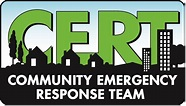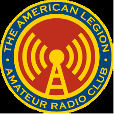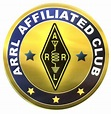The members of N7LGN Radio Club, an American Radio Relay League Affiliated Club, have formed an Amateur Radio Emergency Service (ARES) group. This club can provide communication services to the broader community, especially in areas described by the USGS as a “doughnut hole.” This term refers to regions that face communication challenges during emergencies, making it difficult for community members and, to some extent, first responders to connect outside the affected area.
Many club members are also part of a Community Emergency Response Team (CERT) associated with American Legion Post 113, certified by Ada County. The purpose of CERT is to ensure that, during an emergency, individuals who can provide essential services, including communication support, are available in affected areas. With the requisite training, this initiative helps members prepare and organize themselves to respond effectively in such situations.
Members utilize the HF, VHF, and UHF frequency bands for communication. This includes modes such as Single Side Band (SSB), Continuous Wave (CW), Frequency Modulation (FM), and digital modes like WINLINK, C4FM, and DMR. We integrate Internet-based services such as Star Link and commercial telephone systems whenever feasible and practical. As such, many members have “Go Kits” containing a complete suite of communications gear and power systems that can be deployed immediately. Some club members routinely check into and are a part of the ARRL National Traffic System (NTS) and a traffic system called Radio Relay International (RRI), where messages can be passed from and to any place in the United States.
Club members meet to discuss emergency tactics and operations during two weekly sessions on Thursday evenings, starting at 7:00 PM local time. One session occurs on a local repeater at 146.94 MHz, where participants from several cities across the Treasure Valley check-in. The other session is a simplex net on 147.420 MHz, which focuses on checking in local area participants. Members also participate in The American Legion Amateur Radio Club (TALARC) network, where member organizations from across the United States and some foreign countries connect weekly to stay informed about current world events. Additionally, we practice providing emergency communications twice a year during the ARRL Field Day activity, where we set up our equipment at a remote location and operate for a 24-hour period.





